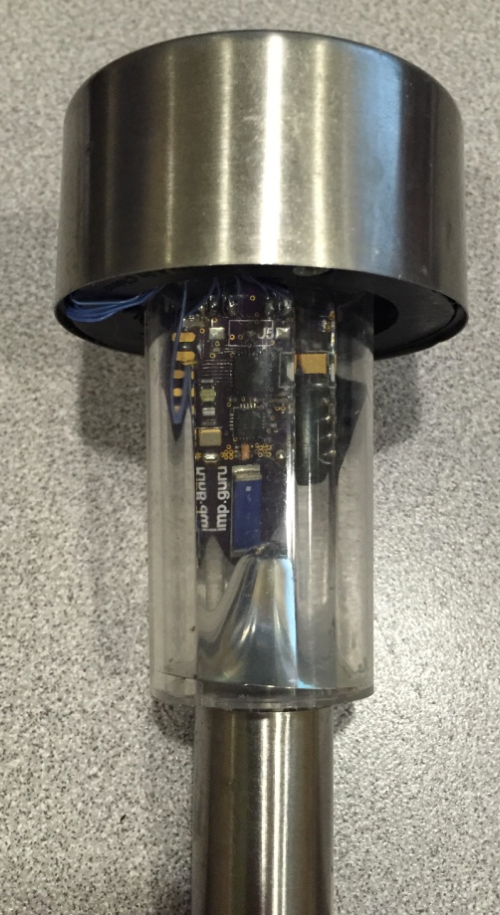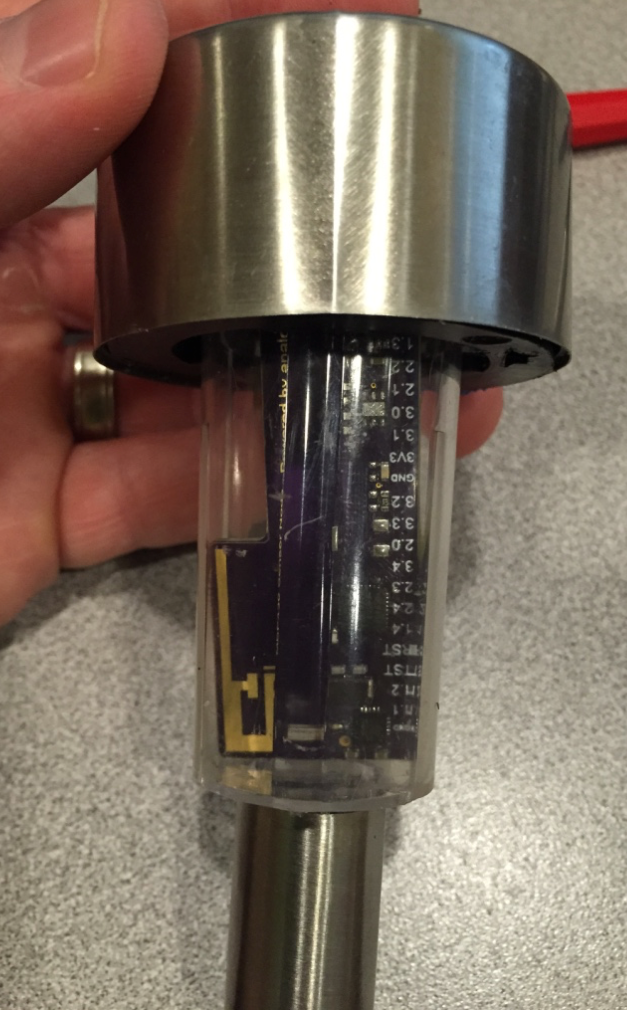There's been a lot of discussions lately on forum.43oh.com about solar powered sensors. For me the goal is always to create low cost sensors. I like cheap because it implies that I can make more sensors with the same investment and more is always better.
We've all seen these at the local Dollar Store, Walmant, Hardware store, etc:

Just one dollar buys an adequate solar panel, a NiCd battery and a charging circuit. Thats pretty cool, all that is left is to add a boost converter and the sensors!
For this project I decided to again do Temp & Humidity as well as some monitoring of the Solar Power System. This includes measuring the Battery Voltage and the current sourced from the solar cell. Here is an image of the hardware:

The boost converter is something that I built strictly for forum members and sold at cost. The PCB and schematic can be found here. Here's a picture:

The current sense amplifier is something that I bodged together with a INA199 and this PCB.
Putting it all together, here is the finished product:

What is neat about this is that the solar light also provides a good water resistant enclosure. Furthermore it breathes well enough that it does not have an issue with water condensation and the Humidity reading remains accurate.
Since I've also written about the 2.4GHz MSP430 Sensor Nodes, here is an example built with one of these. These boards have a boost convert built in so that is an added bonus!

Of course, no analog.io project update would not be complete without some data:

This chart is showing the Current from the solar panel over a two day span. The data looks as expected, the current begins to ramp up as the sun rises, at about noon, the power hits its peak and then fades away into the evening. On June 28, the max power was produced around 2pm, this was about 85mW. This is great considering the sensor node only consumes an average of 1mW!
Here's one more chart, it is a close up of the battery voltage during its charge and discharge cycles:

 Luke Beno
Luke Beno
Discussions
Become a Hackaday.io Member
Create an account to leave a comment. Already have an account? Log In.